#StartSystems
Explore tagged Tumblr posts
Text
Autonomous Agricultural and Construction Vehicles
October 31, 2023
by dorleco
with no comment
Autonomous Vehicle Technology
Edit
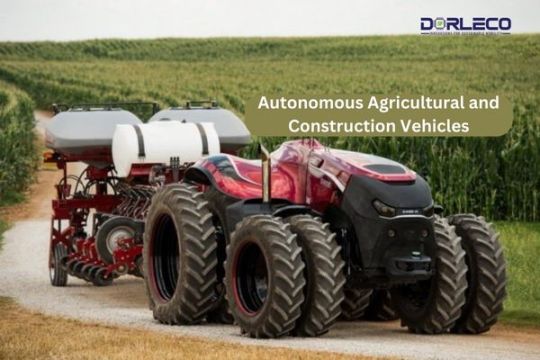
Introduction
A major technological leap in farming and building is represented by Autonomous Agricultural and Construction Vehicles. These cars can function with little assistance from humans because of their sophisticated sensors, GPS, and artificial intelligence systems. This article introduces these cutting-edge devices, summarizing their salient characteristics, advantages, and possible drawbacks of Autonomous Agricultural and Construction Vehicles.
Important Characteristics of Self-Driving Construction and Agricultural Equipment
Technology of Perception and Sensors: Autonomous cars can sense their surroundings thanks to a variety of sensors installed in them, including GPS, LiDAR, radar, and cameras. These sensors give the car real-time information about its surroundings, which aids with navigation and decision-making.
Artificial Intelligence (AI): AI systems analyze the sensor data and decide how to maneuver the vehicle, carry out tasks, and avoid obstacles. Over time, the vehicle’s decision-making abilities are frequently enhanced through the use of computer vision and machine learning.
GPS and Mapping: Accurate navigation requires high-precision GPS devices. Digital maps of the work area are frequently pre-programmed onto vehicles, enabling them to follow predetermined paths and carry out duties with remarkable accuracy.

Remote Monitoring and Control: A lot of self-driving cars come with features that let their operators monitor and manage operations from a distance. This function improves safety and enables on-the-fly modifications in real time.
Interoperability: Autonomous vehicles can interact with other farm equipment and management systems in an agricultural setting to enable coordinated activities like planting, harvesting, and irrigation.
Safety Features: Safety is a top priority in the design of autonomous cars. To avoid collisions, they frequently have emergency stop systems and collision avoidance systems.
Advantages of Autonomous Agricultural and Construction Vehicles
The construction and agricultural industries stand to gain greatly from the many benefits that autonomous cars provide. The following are some of the main benefits:
Enhanced Productivity: Because autonomous cars can operate nonstop, they can accomplish tasks more quickly and with more efficiency. This is especially helpful in agriculture, where crop output depends on timely tasks like planting and harvesting.
Precision and Consistency: These vehicles follow predetermined routes and carry out jobs consistently, operating with a high degree of precision. Increased crop productivity, higher-quality building, and more efficient use of resources are all possible outcomes of this precision.
Cost Savings: Since autonomous cars require fewer human operators, labor costs may be lower in the long run. They use less fuel and resources because they run more effectively.
Operational Efficiency: Using information from sensors and AI algorithms, autonomous cars may instantly modify their course and optimize their routes. This flexibility leads to less waste and more effective use of resources.
Safety: Autonomous vehicles in the construction industry can carry out dangerous operations, such as excavation and demolition, without endangering human operators. They can lessen the physical strain on employees and assist in preventing field accidents in agriculture.
24/7 Operation: Since autonomous vehicles don’t need to sleep or take breaks, they can operate around the clock. This is especially useful at the most important times of the agricultural cycle.
Reduced Environmental Impact: By using resources like water and fertilizers more effectively, autonomous agricultural vehicles can lessen their negative effects on the environment and increase sustainability. Waste in construction can be decreased by optimizing resource use.
Data Gathering and Analysis: A multitude of data regarding the environment, agricultural conditions, and building sites can be gathered by these vehicles. To improve operations, long-term planning, and decision-making, this data can be evaluated.

Disadvantages of Autonomous Agricultural and Construction Vehicles
Although autonomous Agricultural and Construction Vehicles have many benefits, there are a number of drawbacks and difficulties that must be taken into account when putting this technology into practice. The following are some of the main drawbacks:
High Initial Costs: The acquisition and assimilation of self-driving cars and related technologies might be costly, potentially impeding their widespread use, particularly in small and medium-sized enterprises.
Maintenance and Repairs: Because autonomous cars are intricate machinery, they occasionally need professional personnel for repairs in addition to routine maintenance. When compared to conventional vehicles or equipment, maintenance expenses may be higher.
Liability and Legal Issues: Determining who is responsible for accidents or mistakes involving self-driving cars might be complicated, necessitating modifications to existing legal frameworks. It might be difficult to navigate the legal and regulatory environment.
Data security: A lot of data, including environmental and mapping data, is gathered and sent by autonomous cars. To stop misuse, hacking, or theft, it is essential to protect the security and privacy of this data.

Job Displacement: In industries where labor has historically been needed, the use of autonomous cars may result in employment displacement. It will be difficult to manage the social and economic effects of this relocation.
Technological Restrictions: Because autonomous cars rely on a variety of sensors and technology, they could have trouble operating in inclement weather, dimly lit areas, or challenging terrain. Restrictions imposed by technology may hinder their performance.
Human Oversight and Intervention: The ability of autonomous cars to function fully independently may be limited if they still need human supervision to manage difficult or unexpected scenarios.
Adaptation and Training: To properly operate, monitor, and maintain autonomous vehicles, personnel and operators may need to complete training. It may require some time and effort to become used to this new technology.
Conclusion:
In conclusion, autonomous agricultural and construction vehicles represent a transformative leap forward in the fields of farming and construction. These vehicles offer a wide array of benefits, including increased productivity, precision, cost savings, and enhanced safety. They have the potential to revolutionize the way we approach tasks in these industries, making them more efficient, sustainable, and safe.
However, their adoption is not without challenges. High initial costs, regulatory complexities, maintenance requirements, and potential job displacement are factors that must be carefully considered. These challenges emphasize the need for a strategic approach to implementation and a focus on long-term planning.
Despite these challenges, the advantages of autonomous vehicles cannot be overlooked. As technology continues to advance and regulations catch up, the integration of autonomous agricultural and construction vehicles is likely to become more widespread. The key will be to balance the advantages with the disadvantages and mitigate potential risks effectively.
In the coming years, as technology evolves and becomes more accessible, autonomous agricultural and construction vehicles have the potential to drive significant improvements in efficiency, safety, and sustainability, ultimately benefiting both businesses and the broader society. It is a promising path towards a future where we achieve more with less, while also ensuring that our agricultural and construction industries remain competitive and environmentally responsible.
#Autonomouscontrols#Agriculturalvehicles#ConstructionVehicles#selfdrivingcars#KeylessEntry#Cybersecurity#StartSystems#dorleco#controlsystem#ADAS#eMobilityControls#AVRescueProtocols#automotive#controlunit
0 notes
Text
„Edition Dynamic“ des CUPRA Born ab sofort bestellbar

CUPRA Born „Edition Dynamic“
- Neues Sondermodell mit attraktivem Preisvorteil in Höhe von 2.750 Euro - Zahlreiche zusätzliche Ausstattungshighlights bei In- und Exterieur - 19-Zoll-Leichtmetallräder, CUPRA Sportschalensitze und vieles mehr CUPRA bringt sein erstes vollelektrisches Modell auf ein neues Level – mit der CUPRA Born „Edition Dynamic“. Das Sondermodell wartet mit einem attraktiven Preisvorteil und zahlreichen Ausstattungshighlights in Serie auf – und zwar für alle verfügbaren Akku- und Leistungsversionen. Der Elektropionier der Challenger-Brand ist in der „Edition Dynamic“ ab sofort bestellbar.
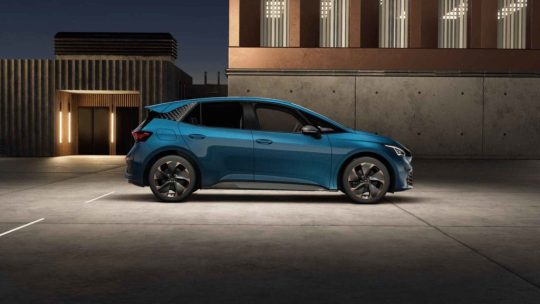
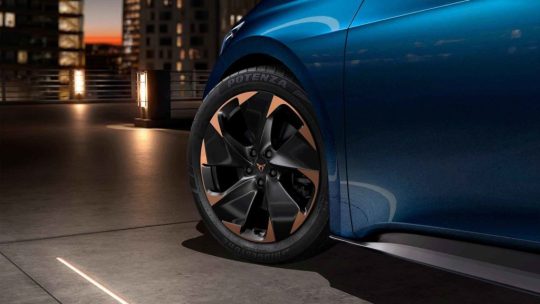
Sportschalensitze mit Massagefunktion serienmäßig Das Sondermodell wird serienmäßig mit dem Dinamica Pack in Granite Grey – optional in Aurora Blue – ausgeliefert. Es beinhaltet unter anderem CUPRA Sportschalensitze aus veganer, recycelter Mikrofaser in Granite Grey mit Lendenwirbelstütze und manuell ausziehbarer Oberschenkelauflage in der ersten Sitzreihe. Die Sitze verfügen zudem über eine Massagefunktion, sind beheizbar und elektrisch einstellbar. Zur Serienausstattung der CUPRA Born „Edition Dynamic“ gehört zudem das Pilot M Pack. Es enthält beispielsweise das Navigationssystem mit einem 12 Zoll großen Farb-Touchscreen und Verkehrszeichenerkennung sowie eine Rückfahrkamera.
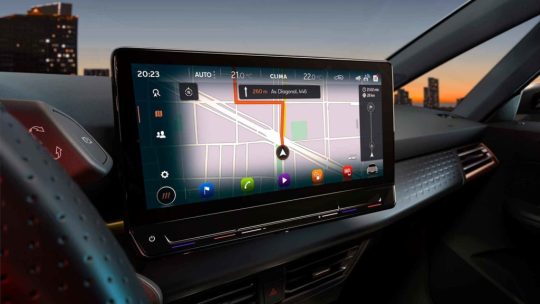
„Mit der ‚Edition Dynamic‘ bieten wir unseren Kundinnen und Kunden ein hochattraktives Sondermodell. Die Serienausstattung ist wirklich bemerkenswert und in Kombination mit dem Preisvorteil ein starkes Kaufargument“, sagt Johannes Fleck, Leiter Produkt, Planung & Strategie bei CUPRA in Deutschland. „Ich bin sicher, dass wir hiermit noch mehr Menschen zum Einstieg in die sportlich geprägte Elektromobilität bewegen und den CUPRA Tribe erweitern können.“ 19-Zoll-Räder und verdunkelte Scheiben Von außen kommt die Sonderedition entsprechend ihres Namens noch dynamischer daher – unter anderem mit den serienmäßigen 19-Zoll-Leichtmetallrädern „TYPHOON Black/Copper“, glanzgedreht, oder auch mit dem Paket „Privacy Glass“. Die Seitenscheiben in der zweiten Sitzreihe sowie die Heckscheibe sind dabei dunkel getönt.

CUPRA Born „Edition Dynamic“ Attraktiver Preisvorteil in Höhe von 2.750 Euro Die CUPRA Born „Edition Dynamic“ ist für alle verfügbaren Varianten des vollelektrischen Modells und mit einem Preisvorteil von 2.750 Euro erhältlich. Somit kostet die 150 kW (204 PS) starke Version des CUPRA Born „Edition Dynamic“ mit einer Batteriekapazität von 58 kWh1 nur 42.140 Euro. Die leistungsstärkere Variante mit 170 kW (231 PS) und 58 kWh-Batteriekapazität2 ist für 43.220 Euro erhältlich. Und der CUPRA Born „Edition Dynamic“ mit 170 kW (231 PS) und 77 kWh Batteriekapazität3 gibt es bereits für 49.020 Euro.
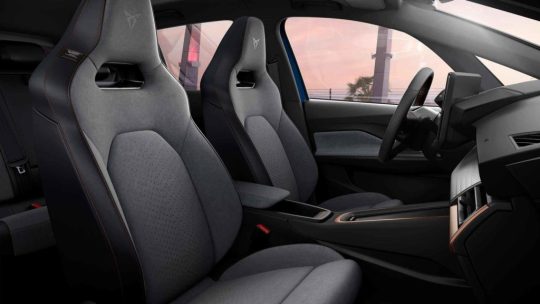
Für die beiden leistungsstärkeren Varianten ist serienmäßig zusätzlich das Tech M Pack inklusive. Es umfasst unter anderem beleuchtete äußere Türgriffmulden vorn, die Car2X-Funktion, das schlüssellose Schließ-und Startsystem „Kessy advanced“ und auch die kabellose Ladestation Wireless Charger für Smartphones. Read the full article
1 note
·
View note
Text
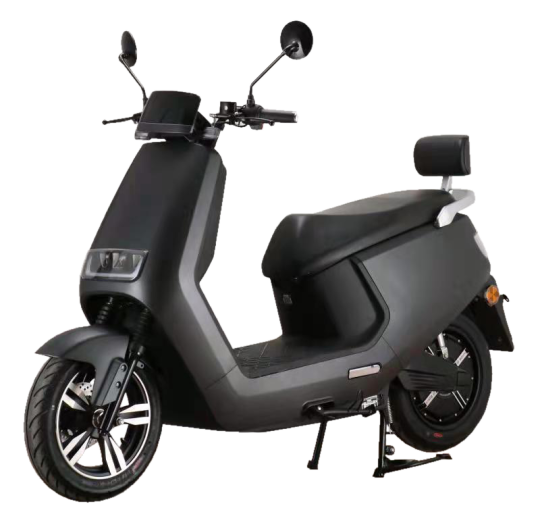
ABS-System | Schlüsselloses Startsystem | Alarmsystem | Notbatterieladesystem | USB-Ladeschnittstelle | Bluetooth Lautsprecher | Stromrückgewinnung durch Rekuperation
BERLIN – Der Arbeiter
BERLIN 6.0 mit 100 km/h Spitzengeschwindigkeit, bis zu 100 km Reichweite (2 x 72V31.5Ah Akkus) und einer konstanten Leistung von 6000W mit einer Höchstleistung von 11000W.
ABS System
Fahre mit ABS System sicher durch die Straßen deiner Stadt. Mit dem einzigartigen Elektroroller-ABS lässt sich dieser Elektroroller sicherer und besser Bremsen.
Fingerabdruckscanner
Mit dem integrierten Fingerabdruckscanner können bis zu 10 Personen gespeichert werden, die dann jeder Zeit mit dem Elektroroller fahren können.
Akustische Fahrzeug Positionserkennung
Du hast im Stress oder Trubel vergessen, wo du deinen Roller abgestellt hast? Keine Sorge, denn dank der akustischen Fahrzeug Positionserkennung, welche über den Schlüssel gesteuert wird, findest Du deinen Elektroroller im Handumdrehen wieder. Einfach per Schlüssel aktivieren und lauschen, woher dein Roller dich ruft.
Tragbarer Hochleistungs- Lithium-Ionen-Akku
In diesem E-Roller sind hochwertige Lithium-Ionen-Akkus verbaut. Diese zeichnen sich im Gegensatz zu Bleibatterien durch eine höhere Reichweite und längere Lebensdauer aus. Hinzu kommt die kurze Ladezeit von nur wenigen Stunden. Die tragbaren Akkus kannst Du sehr einfach aus dem Elektroroller herausnehmen und bei Dir zu Hause – z.B. über Nacht – wieder aufladen.
Bluetooth Lautsprecher
Dank des eingebauten Bluetooth Lautsprechers kannst Du auch während der Fahrt mit deinem Elektroroller immer deine Lieblingsmusik hören. So musst Du nicht zu Kopfhörern greifen, was im Straßenverkehr auch zu gefährlich wäre. Kopple einfach dein Handy mittels Bluetooth mit dem hochwertigen Lautsprecher deines E-Rollers und schon hast Du deine Musik in bester Qualität immer mit dabei.
Eco Mode
Für eine sparsame und besonders umweltbewusste Fortbewegung kannst Du deinen Elektroroller in den ECO-Modus versetzen, was unter anderem einen wesentliche geringeren Verbrauch bewirkt. Für sportliches Fahren gibt es umgekehrt natürlich auch den SPORT-Modus.
Schlüsselfreies Startsystem
In diesem Elektroroller ist ein Wireless Key System verbaut. Dank dieses schlüssellosen Startsystems kannst Du deinen Elektroroller ohne Verzögerung starten. Ein Einstecken des Schlüssels ist nicht notwendig.
LCD-Display
Das LCD-Display bietet alle wichtigen Funktionen im Überblick – damit Du während der Fahrt alles Nötige auf einen Blick erfassen kannst. So werden Dir neben der aktuellen Geschwindigkeit und vielen weitere Features auch der Ladezustand der Batterie angezeigt, damit Du stets rechtzeitig weißt, wann der Elektroroller wieder aufgeladen werden muss.
Startsicherung
Bei ausgeklapptem Fussständer sind alle Funktionen der Rollerelektronik ausgeschaltet, welche ein versehentliches Losfahren des Elektrorollers bewirken könnten.
LED-Scheinwerfer
Die verbauten Scheinwerfer bestehen aus höchst energieeffizienten und leistungsstarken LED-Lichtsystemen. Diese benötigen extrem wenig Strom um die Reichweite des Elektrorollers nicht signifikant einzuschränken.
Alarmanlage
Alle TiSTO Roller sind mit einem speziell entwickelten akustischen Alarmsystem ausgestattet. Wird versucht, der Roller unbefugt zu benutzen, erklingt ein Alarmsignal, das jeden Dieb sofort zurückschrecken lässt und die Aufmerksamkeit auf sich zieht. So steht dein Elektroroller überall und jederzeit sicher und Du kannst sorgenfrei deine Dinge erledigen.
USB-Anschluss zum Handy laden
Elektroroller von TiSTO sind mit einem modernen USB-Ladeanschluss ausgestattet. Du kannst also sogar während der Fahrt deine mobilen Endgeräte, wie Handy oder Tablet, aufladen. Damit Du nie wieder mit leerem Handy-Akku zur Arbeit oder deiner Verabredung erscheinst.
0 notes
Text
Autonomous Vehicle Software
October 30, 2023
by dorleco
with no comment
Autonomous Vehicle Technology
Edit
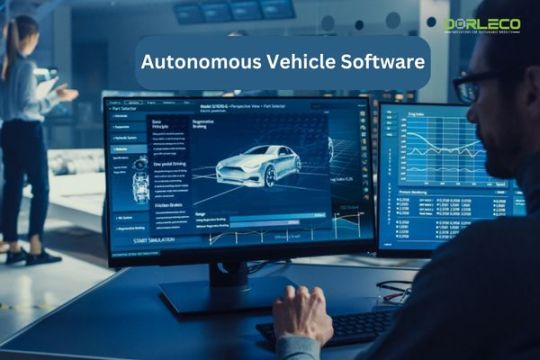
Introduction:
Self-driving cars, also known as autonomous vehicles, have quickly gained popularity as a ground-breaking technology that has the potential to completely change transportation. Modern software systems installed in these cars allow them to navigate and function on the road without the need for human assistance. In this overview of autonomous car software, we’ll look at the main elements, difficulties, and developments in the field of autonomous technology.
Essential Elements of Software for Autonomous Vehicles:
The software for autonomous vehicles is a complex system made up of various essential parts:
Perception: To sense its surroundings, the car’s perception system uses sensors including cameras, radar, LiDAR, and ultrasonic sensors. These sensors gather information about the environment around the car, such as other cars, people walking, traffic lights, and the state of the road.
Localization: The car needs localization in order to comprehend its exact location on the road. For precise localization, inertial measuring units (IMUs), GPS, and map data are utilized.
Mapping: Autonomous cars require high-definition maps. The vehicle is able to make educated decisions because of these maps, which offer comprehensive information about traffic signs, lane markings, and road layout.
Control: To make driving judgments in real-time, the control system analyzes data from perception, localization, and mapping. For safe navigation, it regulates the car’s braking, steering, and acceleration.
Planning and Decision-Making: Based on maps and the observed surroundings, the planning module creates a route for the vehicle, and the decision-making part weighs the pros and cons of each option before choosing the safest and most effective course of action.
Developments in Autonomous Vehicle Software:
The field of autonomous vehicle software has made significant strides recently, with important developments occurring in the following areas:
AI and machine learning: Algorithms for machine learning are enhancing the vision and judgment of self-driving cars, allowing them to take in information from the actual world and adjust to novel circumstances.
Simulation: By enabling developers to test and validate autonomous software in a variety of scenarios, extensive simulation environments can eliminate the requirement for in-person testing.
Connectivity: By sharing data with other cars, the traffic system, and pedestrians, autonomous vehicles can improve efficiency and safety through V2X (vehicle-to-everything) connectivity.
Over-the-Air (OTA) Updates: By addressing security flaws and enhancing performance, OTA software updates enable autonomous cars to receive regular software upgrades.

Pros of Autonomous Vehicle Software
Self-driving car software, or autonomous vehicle software, has several potential advantages and benefits. These advantages have the power to completely transform transportation while also boosting efficiency and safety. The following are a few of the main advantages of autonomous car software:
Increased Safety: Autonomous vehicles have the potential to drastically lower the frequency of collisions brought on by driver error, including speeding, distracted driving, and driving under the influence. Accidents may be reduced as a result of the software’s ability to obey traffic laws, keep safe distances, and make prompt, accurate decisions.
Reduced Traffic Congestion: By interacting with traffic infrastructure and one another, autonomous cars can improve traffic flow. This can lessen traffic congestion by easing blockages and increasing the general effectiveness of transportation networks.
Enhanced Accessibility: People with impairments, the elderly, and those unable to drive due to medical conditions may have more mobility thanks to autonomous vehicles. Their freedom and quality of life may both be greatly enhanced by this.
Environmental Benefits: Fuel economy and pollution can be optimized by programming autonomous cars. Air pollution and greenhouse gas emissions may decline in the future as a result of the switch to electric and driverless vehicles.
Reduced Parking Demand: Autonomous vehicles that can park and drop off people can lessen the need for parking spots in cities, utilizing valuable real estate more wisely.
Time savings: Traveling in an autonomous car allows passengers to make better use of their time. For commuters, this may result in higher output as well as better relaxation and lower stress levels.
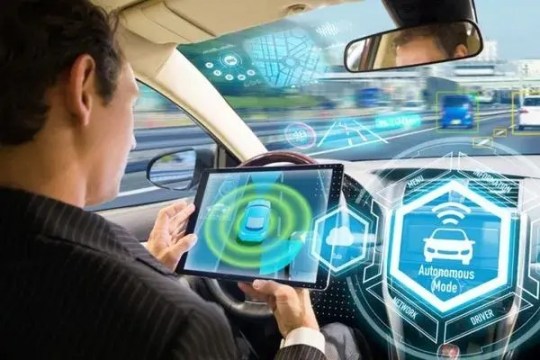
Economic Benefits: From software development to vehicle maintenance, the development and implementation of autonomous cars have the potential to provide jobs across a range of industries. It can also help sectors like delivery services and ride-sharing.
Enhanced Mobility Services: On-demand, shared mobility services can be made possible by autonomous technology, which will save customers money and increase the convenience of transportation. Additionally, it may lessen the necessity for individual car ownership.
Cons of Autonomous Vehicle Software
Although autonomous car software has a lot of potential advantages, there are a number of issues and problems that need to be resolved. The following are some drawbacks and issues with software for autonomous vehicles:
Safety and Reliability: Despite advancements, questions remain regarding the dependability and safety of autonomous cars. Ongoing difficulties include technology malfunctions, software bugs, and the capacity to manage complicated and unforeseen circumstances.
High Development Costs: The process of creating and testing software for autonomous vehicles is costly and resource-intensive. For many businesses, this expense can be a barrier to entry, which could lead to higher car prices.
Cyberattack vulnerability: Software and data transmission play a major role in autonomous cars. They become more susceptible to cyberattacks as a result, endangering their security and safety. One of the main concerns is being protected from cyber dangers.

Legal and Regulatory Difficulties: The laws and regulations pertaining to self-driving cars are constantly changing. It can be difficult to determine who is responsible for accidents or software malfunctions, which could impede the use of the technology.
Job displacement: As autonomous vehicles become more widely used, jobs in sectors including delivery, cab services, and haulage may be lost, thereby disrupting the economy and displacing drivers.
Ethical Dilemmas: In the event of an imminent collision, autonomous cars may have to decide between protecting pedestrians and the people in the vehicle, for example. Solving these moral conundrums is a difficult task.
Privacy Concerns: A lot of data, including location and passenger personal information, is collected and stored by autonomous cars. To stop abuse or breaches, data privacy and security must be guaranteed.
Limited Accessibility: Due to the high expense of autonomous technology, some socioeconomic groups may not be able to use it, which could lead to unequal access to transportation options.
Conclusion:
In conclusion, autonomous vehicle software represents a transformative technology that holds the promise of revolutionizing transportation and mobility. While the benefits are substantial, including improved safety, reduced traffic congestion, enhanced accessibility, and environmental advantages, it’s essential to recognize the challenges and concerns associated with this technology.
Safety and reliability, high development costs, cyber vulnerabilities, legal and regulatory hurdles, job displacement, ethical dilemmas, and privacy issues are among the significant cons that must be addressed as autonomous vehicles continue to evolve. Additionally, the impact on the job market and the potential for job displacement in transportation-related industries are subjects of concern that merit careful consideration.
The ongoing research, development, and collaboration among government agencies, industry stakeholders, and academia are crucial in overcoming these challenges and ensuring the responsible integration of autonomous vehicles into our transportation systems. Regulatory frameworks are evolving, and safety measures are continuously improving, with a strong emphasis on data privacy, security, and ethical considerations.
As the technology matures and these concerns are addressed, the potential for safer, more efficient, and more accessible transportation systems becomes increasingly attainable. Autonomous vehicle software represents a pivotal chapter in the evolution of mobility, offering not only convenience and efficiency but also the prospect of enhancing the overall quality of life for people around the world. Its success will ultimately depend on the ability to strike a balance between innovation and addressing the associated challenges, with a focus on the safety and well-being of all road users.
#Autonomouscontrols#EmergencyResponse#selfdrivingcars#KeylessEntry#Cybersecurity#StartSystems#dorleco#controlsystem#ADAS#eMobilityControls#AVRescueProtocols#automotive#controlunit
0 notes
Photo

ISS-Besatzung setzt fünf kleine Satelliten aus Die Besatzung der ISS hat fünf CubeSats in den Weltraum ausgesetzt, dies ist mit dem japanischen Manipulators JEM RMS und dem Startsystems NanoRacks erfolgt.
0 notes
Text





LUNA - Die Klassische
LUNA 5.0 mit 90km/h, bis zu 80 km Reichweite (2 x 60V32Ah Akkus) und einer Motor-Spitzenleistung von 8800W. Mit Bluetooth Lautsprecher, Schlüsselfreies Startsystem mit Fingerabdruckscanner (Speicher für 10 Personen), ABS System, Tempomat, leicht herausnehmbarer Lithium-Ionen-Akku, uvm.
1 note
·
View note
Photo

ISS-Besatzung setzt fünf kleine Satelliten aus Die Besatzung der ISS hat fünf CubeSats in den Weltraum ausgesetzt, dies ist mit dem japanischen Manipulators JEM RMS und dem Startsystems NanoRacks erfolgt.
0 notes
Text
Polo-SUV VW T-Cross: Weltpremiere mit Cara Delevingne
New Post has been published on https://topday.info/auto/polo-suv-vw-t-cross-weltpremiere-mit-cara-delevingne.html
Polo-SUV VW T-Cross: Weltpremiere mit Cara Delevingne
Da das SUV-Segment immer noch ordentlich boomt und weil unterhalb von Tiguan und T-Roc noch Platz ist, haben die Entscheider in Wolfsburg das Polo-SUV VW T-Cross erdacht. Und was macht die moderne Marke von heute, wenn sie ein neues Produkt nah an die Zielgruppe heranrücken möchte? Klar, man holt sich jemand, der den potentiellen Kaufinteressenten bestens vertraut ist. Und deshalb hat man zur Weltpremiere in Amsterdam Cara Delevingne eingeladen. Wem das jetzt nichts sagt, wir klären das in unserem Artikel auf und geben euch dort alle wichtigen Fakten und Preise zum neuesten SUV-Streich aus Niedersachsen mit auf den Weg.
Aufmerksamkeit ist bei der Vorstellung eines neuen Produktes das A und O. Heutzutage erreicht man das mit einflussreichen Internet-Stars, sogenannten Influencern. Und deshalb hat sich Volkswagen zur Weltpremiere vom neuen Polo-SUV VW T-Cross Cara Delevingne eingeladen. Wem das jetzt nichts sagt: die 26-jährige Britin hat alleine bei Instagram 41,1 Millionen Follower, modelt und ist als Schauspielerin aktiv. Bei der Vorstellung des neuen Fahrzeuges an der Seite von Ralf Brandstätter, dem Chief Operation Officer von VW, ließ die junge Frau alle wissen, wie sehr sie Autos liebt und natürlich auch wie toll die das neue VW-Modell findet. Sie sagt: „[…] Der T-Cross ist mehr als nur ein SUV für die City – er hat viele Gesichter (wie ich!) und ich mag wie stylish er ist.“
Nun aber mal zu den inneren Werten des Mini-SUV aus dem Hause Volkswagen: Mit seiner Länge von 4,11 Metern ist das im Frühjahr 2019 erscheinende Fahrzeug kaum länger als der Kleinwagen Polo. Von dem hat er auch einen Großteil der Technik geerbt, so auch Teile der Motorenpalette. Die beiden 1.0 TSI-Dreizylinder-Benziner mit 95 und 115 PS sind mit Otto-Partikelfiltern ausgestattet. Das Top-Modell bei den Otto-Motoren ist der 1.5 TSI Vierzylinder mit 150 PS. Es wird aber auch einen Diesel, den 1.6 TDI Vierzylinder, mit 95 PS geben. Alle Motoren erfüllen natürlich die neueste Abgasnorm Euro 6d-TEMP. Einen Allradantrieb wird es allerdings nicht geben – alle Modelle sind frontgetrieben.
Schon die Basisausstattung ist mit Assistenzsystemen unterschiedlichster Art ausgestattet. Serienmäßig mit an Bord sind unter anderem ein Notbremssystem, ein Spurhalte- und ein Totwinkelwarner. Auf der Liste der Extras finden sich zudem LED-Scheinwerfer, Park-Lenk-Assistent, Abstandsregel-Tempomat und eine Müdigkeitserkennung.
Im Innenraum gibt es zeitgemäße Konnektivitätslösungen. Für optimale Vernetzung und ausreichend Energie für Smartphone und Co. sorgen bis zu vier USB-Anschlüsse und das induktive Wireless Charging. Auch das schlüssellose Schließ- und Startsystem „Keyless Access‘‘ wird optional angeboten. Ebenfalls gegen Aufpreis gibt es ein Soundsystem der renommierten US-Marke Beats mit 300 Watt starkem Acht-Kanal-Verstärker sowie einem separaten Subwoofer im Kofferraum. Was hingegen in der Einstiegsversion völlig unverständlicherweise fehlt, ist die Klimaanlage. Ein Zustand, der heute einfach nicht mehr zeitgemäß ist. Beim Kofferraumvolumen gibt es beim T-Cross zwischen 385 Litern und 455 Litern. Das Basismodell mit dem 95-PS-Benziner startet bei 17.975 Euro. Gefertigt werden die Fahrzeuge, wie das Schwestermodell Polo auch, im spanischen Volkswagen-Werk Navarra.
youtube
Bilder & Video: © Volkswagen
0 notes
Photo

Sondermodell: Sporttourer im neuen Look BMW Motorrad veredelt für das neue Modelljahr seinen Sporttourer K 1300 S. Zudem gibt es für einige Modelle das schlüssellose Startsystem "Keyless Ride" - auch zum Verriegeln des Lenkradschlosses muss der Schlüssel nicht mehr hervorgekramt werden. .... mehr lesen: Manager Magazin (Quelle)
0 notes
Text
AED Defibrillators

AED defibrillators are electronic devices that deliver electric shocks to a heart in a cardiac arrest. The device works by listening to the heart's rhythm to determine whether or not a shock is needed. If a shock is required, the device will give an alert voice that instructs the user on how to position the electrode pads on the patient's chest. If the machine detects ventricular fibrillation or fast ventricular tachycardia, the device will advise the user to deliver an electric shock. If the device detects a non-shockable rhythm, however, it won't deliver a shock.
There are two types of AED: external and internal. An external defibrillator has electrodes that are attached to the patient's chest, while an internal defibrillator has electrodes implanted inside the patient. The ZOLL AED Pro Semi-Automatic w/ Manual Override is easy to use and has voice prompts and visual displays to make it easy to use. If you plan to use your AED in an ambulance or crash cart, you should consider an AED that has all the features you will need to use it.
An AED is most effective when it is used properly. The device is approved by the FDA, which is why the device's safety is a priority. In addition to receiving safety alerts and recall notices, you should register your device with the manufacturer to stay informed of the latest updates. In addition, it is recommended that people who may use the device regularly enroll in training classes and other classes, such as those offered by the American Red Cross.
In addition to training the staff to use an AED, public awareness of Sudden Cardiac Arrest is important. It is estimated that more than 350,000 people will suffer from cardiac arrest this year. The only way to return a heart to a normal rhythm is to use an AED. In addition to the AED, trained medical personnel are the only people who can administer this therapy and the chances of survival decrease by 10% for every minute that passes without defibrillation.
The technology behind Physio Control LifePak 500 defibrillators is so simple that almost anyone can learn to use them. Moreover, most states' Good Samaritan laws permit the use of AEDs by volunteers. This means that these volunteer responders cannot be held liable for the care they give to a cardiac arrest victim. As long as they use it in good faith and follow training guidelines, they won't face legal trouble for their actions.
The LIFE(r) StartSystem, which weighs 8 pounds and is 12" x 13", comes with a LIFE-O2(r) regulator for supplemental oxygen. The LIFE(r) CPR Mask is a universal fit for an adult and children. This device is designed to administer emergency oxygen and is an effective companion for an AED. With the LIFE(r)SoftPac, the device can continue providing emergency oxygen even after the defibrillation is completed. Check out this related post to get more enlightened on the topic: https://en.wikipedia.org/wiki/Implantable_cardioverter-defibrillator.
0 notes
Text
2017 Nissan Qashqai Fahrbericht | Test
Wie es scheint, dürfen wir zum Ende des nächsten Jahres bereits einen neuen Nissan Qashqai erwarten. Aber was ist mit dem aktuellen Modell? Zum Modelljahr 2017 erst ein umfangreiches Facelift erfahren, erfreut sich der aktuelle Nissan Qashqai weiterhin großer Beliebtheit. Welche Talente bringt der Kompakt-SUV der Japaner mit?
Nissan Qashqai Design Check
Ein grimmiger Blick, das ist es vor allem, was die Gesichtszüge des Nissan Qashqai charakterisiert. Seine flachen Scheinwerfer mit dem Bumerang-förmigen Tagfahrlicht zeigen, dass das japanische SUV gar nicht gut gelaunt ist und am liebsten die Straße mit seinen bis zu 19-Zoll großen Rädern aufreißen würde. Aber ist der Japaner wirklich so ein übler Zeitgenosse?
2017 Nissan Qashqai – Fahrbericht – Test
Von außen ein klares JA! Der V-Motion-Grill steht nicht nur steil, sondern auch selbstbewusst und mit dickem Chrom geschmückt im Fahrtwind. Er wirkt geradezu so, als wäre er dafür geschaffen, langsam vorausfahrende Fahrzeuge anzuschieben. Eine Etage tiefer fallen die kleinen, silbernen Finnen auf, die die Fahrtluft zu kanalisieren. Und sonst?
Ja sonst zeigt sich das SUV stämmig-muskulös. Nicht falsch verstehen, der Nissan Qashqai ist nicht schwülstig, sondern wohl proportioniert und zeigt, dass es lieber Großstadteroberer also Landmaschine sein möchte. Ausgestellte, satte Radhäuser zieren die Seitenlinie und demonstrieren die kraftvolle Design-Ausrichtung. Die nach hinten hin frech ansteigende Seitenlinie unterstreicht dabei die in den Vordergrund gerückte Dynamik. Und auch hinten zeigt sich die Sportlichkeit in einem wohl proportionierten Dachspoiler, der die seicht abfallende Dachlinie aufnimmt. Daneben gibt es ein weiteres Element, dass sich bereits an anderer Stelle wiederfindet und am Heck aufgenommen wird: Das Lichtdesign. Vorn, wie hinten vertraut der Nissan Qashqai auf ein illuminiertes Bumerang-Element. Am Heck allerdings mit 3D-Effekt.
Nissan Qashqai Motoren Check
So sportlich wie der Nissan Qashqai aussieht, lässt es der 1.5 dCi Diesel allerdings nicht angehen. Der Vierzylinder generiert 81 kW/110 PS und maximal 260 Nm, die zwischen 1.750 und 2.500 Umdrehungen anliegen. Damit ist der ausschließlich als Fronttriebler erhältliche Nissan Qashqai 1.5 dCi kaum überfordert und bietet ausreichende Fahrleistungen. 100 km/h erreicht man binnen 11,9 Sekunden und ist maximal 182 km/h schnell. Sportlich ist das nicht, aber auch nicht langsam. Sportlicher Ehrgeiz entsteht eher beim Erreichen des angegebenen Durchschnittsverbrauchs von 3,8 bis 4,0 Litern. In der Realität darf man wohl mit einem Literchen mehr rechnen.
2017 Nissan Qashqai – Fahrbericht – Die Motoren!
Neben dem 1.5 dCi stehen noch zwei Benziner parat, um es mit dem Großstadtdschungel aufzunehmen. Nummer eins ist ein 1.2 Liter Benziner mit 115 PS, Nummer zwei ein 1.6 Liter Benziner mit 163 PS. Ansonsten gibt es einen weiteren Diesel, der als Empfehlung gelten darf. Der 1.6 dCi geht mit 130 PS ordentlich kräftig zur Sache und ist der einzige Antrieb, der optional mit Allradantrieb erhältlich ist – falls man sich doch einmal im Unwegsamen verlaufen sollte.
Nissan Qashqai Innenraum Check
Sportlich außen, zurückhaltend unter der Haube und innen? Hier weiß der Nissan Qashqai zu überzeugen. Die Platzverhältnisse sind eines echten SUV würdig, sodass man zu viert überhaupt keine Probleme bekommen sollte. Es sei denn vier Dirk Nowitzkis versuchen im SUV Platz zu finden. Dann wird es natürlich schwierig, aber in welchem Fahrzeug ist das nicht der Fall? Keine Beanstandungen also. Das gilt genauso für die bequemen Sitze, die mit dem Facelift eine Spur schmaler ausfallen, also zuvor. Das merkt man vor allem im Fond: Anstatt dass die schmaleren Frontsitze kneifen, bieten sie in Sitzreihe zwei mehr Beinraum – ein Geniestreich. Sportlich, und damit passend zum Exterieur zeigt sich das unten abgeflachte Lenkrad, über das sich auch das Infotainment steuern lässt.
2017 Nissan Qashqai – Fahrbericht – Der Innenraum!
Das NissanConnect Navigationssystem gefällt mit seiner nutzerfreundlichen Oberfläche, lässt aber leider Apple CarPlay und Android Auto vermissen. Das können andere Nissan-Modelle, wie etwa der neue Micra, besser. Außerdem ist das Infotainment eine Spur zu tief installiert.
Und der Sport? Kein Problem: Klappe auf, die Rücksitzbank umklappen und hinein mit dem Sport-Equipment. Hilfreich ist hierbei nicht nur das Ladevolumen von alltagstauglichen 430 bis 1.585 Litern, sondern auch der praktische, doppelte Ladeboden. Damit wird der Nissan Qashqai der eigentlichen Nomenklatur eines SUVs also gerecht, indem er für eine Vielzahl an „Sports Utilities“ gerüstet ist.
2017 Nissan Qashqai – Fahrbericht – Der Kofferraum!
Nissan Qashqai Fahreindruck Check
Nun gut: Der Qashi – wie ihn einige seiner Fans nennen – beherrscht den sportlichen Auftritt und bietet Platz für nahezu alle Lebenslagen. Wie ist es aber um das Fahren bestellt? Sein leiser und vibrationsarmer 1.5 dCi gefällt besonders mit seinem niedrigen Verbrauch, lässt es aber sonst eher gemütlich angehen. Hat man das kleine Turboloch einmal überwunden, kann man ihn aber leichtfüßig ausdrehen: Regionen jenseits der 4.000er-Makre sind kein Problem. Leichtfüßigkeit ist also das richtige Stichwort für den Crossover bzw. SUV. Mit seiner reduzierten Geräuschkulisse und dem komfortablen Fahrwerk lässt man es gerne entspannt angehen. Schlaglöcher werden gekonnt weggebügelt. Und auch die Lenkung gibt sich leichtgängig, wenn auch nicht sehr direkt und mit großem Lenkeinschlag operierend. Das hat der Nissan Qashqai mit seinem Konzern- und Plattformbruder, dem Renault Kadjar, gemeinsam. Das gilt im Übrigen genauso für das Kurventalent, das mit einer dezenten Wankneigung eher zur gemütlichen Fahrweise einlädt.
2017 Nissan Qashqai – Fahrbericht – Der Fahreindruck!
Damit auch ja nichts schief geht, steht zudem eine ganze Armada an Fahrerassistenzsystemen bereit. So bietet der Nissan Qashqai – je nach Ausstattung – einen Notbremsassistenten mit Fußgängererkennung, einen Querverkehrswarner, eine Verkehrszeichenerkennung sowie einen Müdigkeitswarner. Beim Einparken steht der entsprechende Assistent parat und wird vom 360-Grad-Aroundview-Monitor unterstützt. Unterstützung bieten auch der Totwinkel-Warner sowie der Spurhalte-Assistent. Also alles da, das die Fahrt mit Kind und Kegel sicher macht.
Nissan Qashqai Foto Galerie
+ 5
Nissan Qashqai Preis Check
Er hat es so gewollt: Der Nissan Qashqai spielt mit dem Thema der Sportlichkeit. Sportliche geht es also entsprechend preislich zu – allerdings im positiven Sinne. So startet der Japaner bei erträglichen 20.490 Euro für die Einstiegsversion und ist damit attraktiv eingepreist. Zumal man dafür bereits ein CD-Radio mit Bluetooth Freisprecheinrichtung, eine manuelle Klimaanlage und ein paar elektrische Helferlein bekommt. Für den kleinen Diesel muss man indes mindestens 26.500 Euro in die Hand nehmen, was noch im Rahmen liegt. Dafür bekommt man allerdings schon die angenehm ausstaffierte Acenta-Ausstattung mit Zwei-Zonen-Klimaautomatik, Sitzheizung vorn sowie einem intelligenten und autonomen Notbremsassistenten, einer Einparkhilfe rundum und 17-Zoll-Leichtmetallfelgen.
2017 Nissan Qashqai – Fahrbericht – Preis-Check!
Darf es noch etwas mehr sein, dann lohnt die N-Connecta Linie für knapp 2.500 Euro mehr. Hier ist das gute NissanConnect Navigationssystem mit intelligentem Around View Monitor für die 360 Grad Rundumsichtkamera ebenso dabei, wie ein schlüsselloses Zugangs- und Startsystem oder das Fahrerassistenzpaket mit Verkehrszeichenerkennung. Der Optik zuträglich sind 18-Zoll-Leichtmetallfelgen. Die Topversionen Tekna und Tekna+ bieten zwar LED-Licht, ansonsten aber verzichtbare Extras, die den Geldbeutel nur über Gebühr strapazieren.
Nissan Qashqai Zielgruppencheck und Fazit
Er ist so etwas wie die eierlegende Wollmilchsau im Portfolio von Nissan. Er sieht bestechend gut aus, mimt den Sportler, ist aber ein ganz gemütlicher Zeitgenosse, der es genauso sparsam, wie geräumig mag. Nachteile? Naja, der sportlichen Optik würden ein paar Pferdestärken mehr gut zu Gesicht stehen. Dennoch macht man mit dem Nissan Qashqai nichts verkehrt. Ganz gleich ob man im gehobenen Alter einfach die erhöhte Sitzposition mag oder im jugendlichen Antrieb sein Mountainbike in jeder Lebenslage mitschleift. Der Nissan Qashqai macht alles mit.
The post 2017 Nissan Qashqai Fahrbericht | Test appeared first on R+V24 Magazin.
0 notes
Text
Cyber security for Autonomous Vehicles
October 27, 2023
by dorleco
with no comment
Autonomous Vehicle Technology
Edit
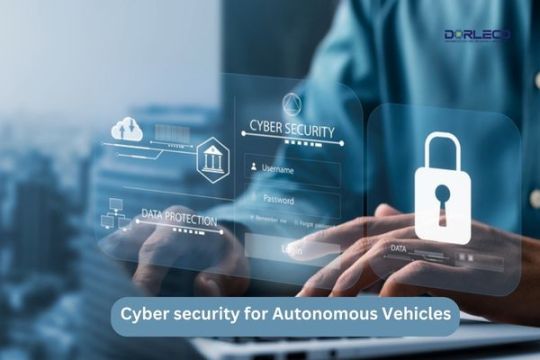
Introduction:
In the automobile business, autonomous vehicles, sometimes known as self-driving cars, are a game-changing technological advancement. These automobiles have the power to improve travel conditions generally, lessen traffic, and raise road safety. But as a result of its incorporation into our roads, a whole new set of security issues have surfaced. An overview of Cyber security for Autonomous Vehicles will be given in this introduction, along with a focus on the significance of protecting these cutting-edge modes of transportation.
The Importance of Cyber Security for Autonomous Vehicles
Data-Driven Operation: In order to make judgments in real time, autonomous cars mostly rely on communication networks and data. Any loss of availability or integrity of data might have dire repercussions.
Safety Issues: Passengers’ and other drivers’ safety may be in danger if autonomous cars are compromised. Accidents can occur when sensors are manipulated or when the operations of the vehicle are controlled remotely.
Privacy Concerns: A lot of information about the whereabouts and actions of passengers is gathered by autonomous cars. To preserve privacy, this sensitive information must be protected.
Economic Impact: The market for autonomous cars is expected to reach $1 trillion. Cybersecurity breaches may disrupt this developing market, resulting in monetary losses and eroding public confidence.
Key Cyber Security Challenges:
Vehicular Networks: Through intricate networks, autonomous cars can interact with infrastructure and with one another. These networks must be secured in order to stop illegal access and data breaches.
Sensor Systems: LiDAR and cameras are two examples of sensors that are essential for perception and navigation. It is possible to trick the car using these sensors, which poses a risk to safety.
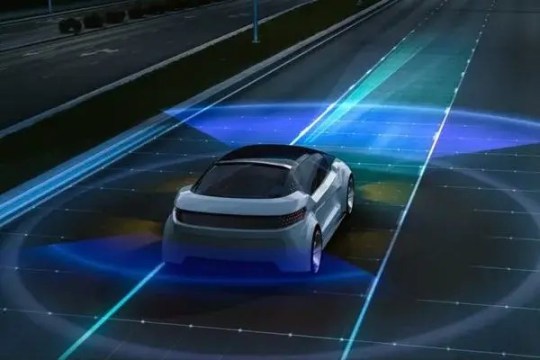
Software Vulnerabilities: The complex software systems that autonomous cars rely on could have flaws. Software security and patching are essential to preventing exploits.
Over-the-Air (OTA) Updates: OTA updates improve the security and functionality of vehicles. It is imperative to guarantee the validity and integrity of these updates.
Human-Machine Interface (HMI): Infotainment systems and other HMI components need to be secured against hacking attempts that can compromise the operation of cars.
Mitigating Cyber Security Risks:
Encryption: To avoid data theft and eavesdropping, data should be encrypted both while it is in transit and at rest.
Intrusion Detection Systems: Use cutting-edge intrusion detection technologies to keep an eye on network activity and spot irregularities.
Firmware Validation and Secure Boot: Make use of secure boot procedures to guarantee that the car’s systems are running only approved firmware.
Multi-Factor Authentication: Use strong authentication methods, such as multi-factor authentication, to gain access to car systems and data.
Collaboration and Regulation: Encourage cooperation between automakers, authorities, and cyber security professionals to create and implement industry standards and laws.
Advantages of Cybersecurity for Autonomous Vehicles
Numerous benefits are provided by cybersecurity for autonomous vehicles, which are essential for guaranteeing the dependable and safe functioning of these vehicles. These benefits are critical to the success and widespread acceptance of autonomous vehicle technology and the safety of both passengers and the broader public. The following are the main benefits of cybersecurity for self-driving cars:
1. Safety and Reliability:
Cybersecurity measures protect autonomous cars from malevolent cyberattacks, preventing the compromise of their vital operational systems. This improves safety by reducing the possibility of unwanted access, data theft, or manipulation of vehicle functionality.
Avoiding Accidents: Cybersecurity precautions might lessen the likelihood of mishaps brought on by hacking into car controls or sensors. Ensuring the accuracy of decisions and preventing collisions requires safeguarding the integrity of sensor data and communication systems.
2. Data Privacy:
Safeguarding Personal Information: Autonomous cars collect a tonne of information about the whereabouts and activities of their occupants. Passenger privacy is preserved via effective cybersecurity, which guarantees that this sensitive information is kept private.
Adherence to Data Regulations: With data privacy laws such as the CCPA and GDPR in force, it is imperative to guarantee the security of personal information in autonomous cars in order to prevent legal ramifications.
3. Maintaining Public Trust:
Building Confidence: Maintaining Public Trust in a strong cyber security framework fosters public, manufacturer, and passenger trust. If passengers feel that their privacy and safety are guaranteed, they are more likely to accept autonomous vehicles.
Maintaining Reputation: Manufacturers of autonomous vehicles and the technology in general risk having their good name damaged by a single cyber security incident. Robust cyber security safeguards the industry’s reputation.
4. Preventing Financial Loss:
Safeguarding Investments: The automobile industry, manufacturers, and stakeholders have to make substantial investments in autonomous vehicles. By averting security breaches and the resulting financial losses, cyber security contributes to the protection of these investments.
Liabilities Reduction: Cyber security for Autonomous Vehicles measures might lessen the possibility of legal ramifications from autonomous vehicle-related accidents or privacy violations.
5. Meeting Industry Standards:
Complying with Regulations: The development and implementation of autonomous cars require adherence to cybersecurity standards and regulations. Government agencies and business associations frequently demand adherence to these criteria.
Reducing Regulatory Barriers: Good Cyber security for Autonomous Vehicles procedures can make it easier for producers of autonomous vehicles to comply with regulatory regulations, hastening the commercialization of the technology.
6. Secure Updates:
Over-the-air Updates: Over-the-air (OTA) updates are frequently used in autonomous vehicles. Cybersecurity makes sure these upgrades are safe and uncheckable. This stops software vulnerabilities and illegal changes.

7. Continuous Improvement:
Adaptability: Because cybersecurity is dynamic, it must constantly evolve to meet new threats. Cybersecurity procedures for autonomous vehicles allow for continuous improvement and tinkering with security protocols.
Disadvantages of Cyber Security for Autonomous Vehicles
Although Cyber security for Autonomous Vehicles is crucial for self-driving cars, putting these precautions in place has significant drawbacks and difficulties. To successfully address and minimize these difficulties, awareness of them is essential. The following are a few drawbacks of cybersecurity for self-driving cars:
Cost and Complexity: Putting strong cybersecurity safeguards in place can be expensive and time-consuming. The cost of developing autonomous vehicles may go up as a result of the substantial financial and human resources needed to create, maintain, and update security systems and protocols.
Performance Impact: There may be a performance cost associated with certain cybersecurity solutions, such as intrusion detection systems and encryption. This may have an impact on autonomous cars’ ability to make decisions in real time, which could cause delays in reacting to urgent circumstances.
Negatives/False Positives: Intrusion detection systems might mistakenly identify genuine threats or produce false alerts. This can be a big problem because ignored threats might have serious repercussions, and false alarms can cause needless interventions or service interruptions.
Regulatory Compliance: Although following regulations is necessary to guarantee a minimal level of security, it might be difficult to do so. It can be difficult for manufacturers to comply with various regional standards and laws when they change.
Resource Constraints: In the autonomous vehicle sector, smaller or newly established businesses may find it difficult to set aside enough funds for effective cybersecurity procedures. This may cause their cars to have security flaws.
User Experience: The user experience may suffer from overly stringent cybersecurity measures. Passengers may become irritated and discouraged from using autonomous vehicles as a result of overly stringent security procedures, such as frequent identification reminders.
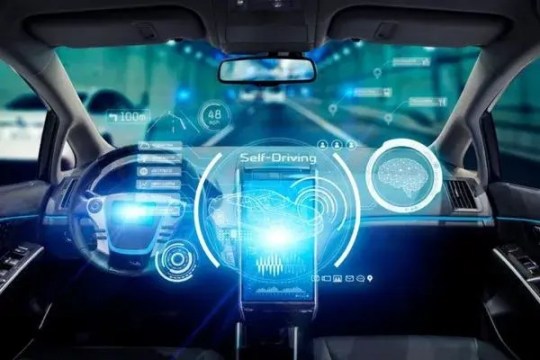
Interoperability Problems: It can be difficult to make sure that different autonomous car systems and parts are interoperable with one another and follow cybersecurity guidelines. Vulnerabilities resulting from incompatibilities could be exploited by attackers.
Conclusion:
In conclusion, Cyber security for Autonomous Vehicles is a critical and evolving field that plays a pivotal role in the successful integration of self-driving cars into our transportation systems. The advantages of robust cybersecurity measures, including safety, data privacy, public trust, financial protection, regulatory compliance, and the facilitation of secure over-the-air updates, are significant and far-reaching. These advantages not only safeguard passengers and the public but also contribute to the continued growth and success of the autonomous vehicle industry.
However, it is equally important to acknowledge the challenges and disadvantages associated with implementing Cyber security for Autonomous Vehicles. These challenges, such as increased complexity and cost, potential performance impacts, and the need to strike a delicate balance between innovation and security, underscore the need for a comprehensive and adaptable approach to cybersecurity.
Addressing these challenges requires collaboration among autonomous vehicle manufacturers, cybersecurity experts, regulators, and stakeholders. It necessitates ongoing research and development to stay ahead of evolving threats and vulnerabilities. Moreover, it emphasizes the importance of designing security measures that do not hinder the user experience but rather enhance it.
As autonomous vehicles become an integral part of our future transportation landscape, ensuring that they are secure from cyber threats is not just a technical concern but a social and ethical responsibility. By proactively addressing these challenges and leveraging the advantages of Cyber security for Autonomous Vehicles, we can pave the way for safer, more efficient, and more reliable autonomous vehicles that benefit society as a whole. Cybersecurity is the linchpin in this endeavor, providing the assurance that the promise of self-driving cars can be realized while minimizing the risks associated with them.
#Autonomouscontrols#EmergencyResponse#selfdrivingcars#KeylessEntry#Cybersecurity#StartSystems#dorleco#controlsystem#ADAS#eMobilityControls#AVRescueProtocols#automotive#controlunit
0 notes
Text
Anlasser / Starter
Das Startsystem hat den Zweck, die Kurbelwelle des Motors anzukurbeln, um den ersten Lebendimpuls oder die erste Expansionszeit oder Kraft, die ihren Betrieb beginnt, zu erreichen. Ein voll aufgeladener Akku kann durch längeres Betätigen des Zündschalters in wenigen Minuten entladen werden, es wird geschätzt, dass der Anlasser / Starter einen Verbrauch von 400 bis 500 Ampere Strom hat und dann entstand die Idee, dass eine Batterie vollständig entladen werden kann In einer kurzen Zeit ist es deshalb nicht ratsam, den Startschalter zu missbrauchen.
0 notes
Text
Härtel will Fortuna überraschen
Trainer Jens Härtel vom 1. FC Magdeburg will alles daransetzen, Auswärtsgegner Fortuna Köln am Sonnabend im Südstadion zu überraschen. Von Manuel Holscher Manuel Holscher Magdeburg l 0:3, 1:2, 0:0, 1:2 – die Drittliga-Bilanz gegen Fortuna Köln zeigt, dass der kommende Gegner dem FCM überhaupt nicht liegt. „Wir haben gegen Köln noch nie unser richtiges Gesicht gezeigt und einiges gutzumachen“, bestätigt Härtel. Sein Gegenüber Uwe Koschinat kennt Härtel noch aus der gemeinsamen Zeit, als beide zusammen die Fußballlehrer-Lizenz machten. „Im Januar dieses Jahres beim 1:2 kamen die meisten langen Bälle von uns direkt wieder zurück. Christian Beck ist deshalb mit seiner Kopfballstärke gefordert. Uwe passt seine Mannschaft immer sehr gut an den Gegner an. Es kann sein, dass wir diesmal etwas anderes machen. Wir müssen versuchen, Fortuna zu überraschen“, so Härtel. Teil dieser Überraschung könnte ein Wechsel des Systems sein. Die Volksstimme nennt die möglichen Varianten: Mögliche Formationen Das bewährte 3-4-3: In dieser Grundordnung ließ Härtel im Verlauf dieser Spielzeit und auch in der Rückrunde der vergangenen Saison meistens agieren. „Wir fühlen uns in diesem System sehr wohl“, sagt Nils Butzen. In der Rückwärtsbewegung wird aus der Dreierkette häufig eine Fünferkette. Der Vorteil liegt auf der Hand. Der FCM steht durch die flexiblen Außenspieler und die beiden zusätzlichen defensiven Mittelfeldspieler sehr kompakt und lässt nur wenig Torgefahr des Gegners zu. Zuletzt lahmte allerdings die Wucht im Angriff, viel läuft über außen und wenn die Flanken nicht gut sind, hängt Mittelstürmer Christian Beck in der Luft. In der Offensive fehlt manchmal ein Spielgestalter beziehungsweise ein Zwischenspieler, der defensiv und offensiv Akzente setzt. Das kompakte 4-3-3: In Osnabrück stellte Härtel nach wenigen Minuten auf ein 4-3-3 um. Abwehrchef Richard Weil wurde ins defensive Mittelfeld vorgezogen, zusammen mit Dennis Erdmann und Björn Rother wurde dadurch die Präsenz und der Zugriff dort deutlich erhöht. Nico Hammann und Nils Butzen gingen im Gegenzug nach hinten und nahmen jeweils die Rolle als Außenverteidiger ein. Diese Variante bietet sich an, wenn der Gegner mit drei Stürmern spielt, was bei Köln durchaus der Fall sein könnte, damit in der Defensive nicht Mann gegen Mann gespielt werden muss, wie es bei einer Dreierkette der Fall wäre. Das ballbesitzorientierte 3-5-2: Dieses System war Härtels Favorit zu Saisonbeginn. Die spielerische Note wird betont, mit Andreas Ludwig ist ein Akteur im Kader, der hinter den Spitzen oder zwischen den Stürmern und dem defensiven Mittelfeld auflaufen kann. Der Schwerpunkt liegt auf dem Spiel mit flachen Pässen durch die Mitte und weniger über die Außen. Im Landespokal setzte der Trainer auf diese Grundordnung mit Felix Lohkemper und Julius Düker im Sturm und Ludwig als Gestalter. In der Vorbereitung überzeugten Lohkemper und Beck in der Rolle als Doppelspitze. „Der Nachteil im 3-5-2 ist, dass wir die Außenpositionen nur einfach und nicht wie im 3-4-3 doppelt besetzt haben“, gibt Härtel zu bedenken. Trotzdem bleibt es eine gute Option, die Spieler hierfür hat der FCM im Kader. Das flexible 4-4-2, 4-1-4-1 oder 4-2-3-1: Im Verlauf der Landespokalpartie in Naumburg wechselte Härtel vom 3-5-2 auf ein 4-4-2. Diese Umstellung kann schnell vollzogen werden und eignet sich somit als Startsystem oder als Wechselmöglichkeit im Verlauf einer Partie. Das 4-2-3-1 ließ Koschinat bei Fortuna Köln in dieser Saison vorwiegend spielen. Praktisch ist daran, dass es ähnlich wie das 4-3-3 aufgebaut ist und somit schnell gewechselt werden könnte. Anstelle des zusätzlichen Spielers im defensiven Mittelfeld (4-3-3) gibt es beim 4-2-3-1 einen Akteur direkt hinter den Spitzen. Außerdem laufen die beiden Außen im Mittelfeld ein Stückchen hinter dem einzigen Stürmer auf, können aber auch flexibel nach vorne schieben. Lesen Sie den ganzen Artikel
0 notes
Text
Jeep Renegade Nitro – Mit Snowboard und Sitzheizung
Als Sondermodell „Nitro“ will der Jeep Renegade nun Wintersportler locken. Zum Lieferumfang des Mini-SUV zählt neben einem Ski-Dachträger und unempfindlichen Gummi-Fußmatten ein Snowboard der Marke Nitro im Wert von rund 600 Euro. Die Ausstattung beinhaltet unter anderem Zweizonen-Klimaautomatik, Sitz- und Lenkradheizung sowie ein schlüsselloses Startsystem. Das Motorenprogramm umfasst drei Benziner mit Leistungswerten zwischen 81 kW/110 ... Quelle: Jeep Renegade Nitro – Mit Snowboard und Sitzheizung
0 notes
Text
Hyundai i40 Kombi: Aufgefrischte Optik und neue Assistenzsysteme
New Post has been published on https://topday.info/auto/hyundai-i40-kombi-aufgefrischte-optik-und-neue-assistenzsysteme.html
Hyundai i40 Kombi: Aufgefrischte Optik und neue Assistenzsysteme
Die kurze Zwangspause im Zuge der WLTP-Umstellung, in der die Koreaner ihren Mittelklasse-Kombi vom Markt genommen hatten, muss nicht immer etwas Negatives sein, denn zum Modelljahr 2019 ist der Hyundai i40 Kombi nun mit aufgefrischter Optik und neuen Assistenzsystemen wieder da. Ab sofort kann der südkoreanische Frachter zum Listenpreis ab 29.900 Euro bestellt werden.
Eine neue Kühlergrilloptik im Kaskaden-Design sowie die neuen 18-Zoll-Leichtmetallfelgen für die höhere Ausstattungslinie „Space Plus“ sorgen beim Hyundai i40 Kombi im neuen Modelljahr für eine aufgefrischte Optik. Neue Assistenzsysteme, wie der aktive Kollisionsverhinderer, der zwischen 10 und 75 km/h arbeitet, runden nun die erweiterte Sicherheitsausstattung ab.
Für interessierte Kunden stehen zwei Ausstattungsoptionen zur Wahl: „Space“ und „Space Plus“. Während die Basisversion bereits Zwei-Zonen-Klimaautomatik, Audiosystem mit DAB-Radio und 7-Zoll-Touchscreen, einen elektrisch verstellbaren Fahrersitz, beheizbare Vordersitze und Lenkrad sowie eine akustische Einparkhilfe vorne und hinten bietet, gibt es in der „Space-Plus“-Top-Ausstattung zusätzlich noch Bi-Xenon-Leuchten, Navigation, Rückfahrkamera, Verkehrszeichenerkennung, Ledersitze, schlüsselloses Startsystem und neun Airbags.
Für Vortrieb sorgt ein neuer 1,6-Liter-Diesel 1.6 CRDi, den es in den beiden Leistungsstufen mit 115 PS und 280 Nm sowie 136 PS und 320 Nm (mit der Top-Ausstattung „Space Plus“ ab 39.600 Euro) geben wird. Die stärkere Version kann auch optional anstatt mit einem Sechsgang-Handschaltgetriebe mit dem siebenstufigen Doppelkupplungsgetriebe 7DCT ausgestattet werden. Ebenfalls im Angebot ist der 1,6-Liter-Benzinmotor mit 135 PS.
Wer zuhause noch einen alten Diesel der Stufen Euro 1 bis Euro 5 hat und den bei einen Hyundai-Händler bis zum 31. Dezember 2018 im Rahmen der Aktion „Green Deal 2.0“ gegen einen neuen i40 Kombi eintauscht, kann zudem eine Aktionsprämie von 10.000 Euro erhalten. Einzige Voraussetzung: Das Fahrzeug muss mindestens sechs Monate auf den privaten oder gewerblichen Endkunden zugelassen gewesen sein.
0 notes